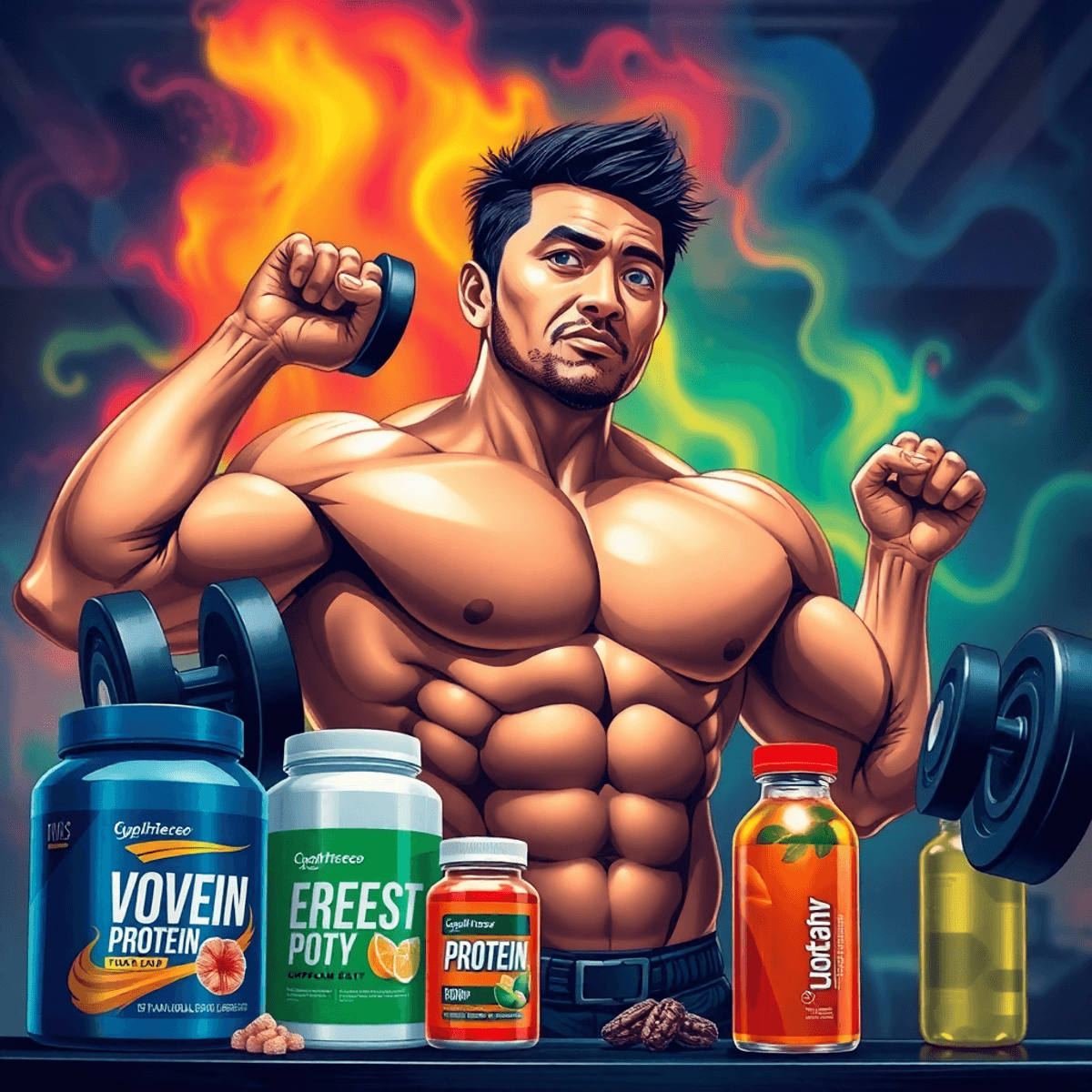How to Maintain Proper Health and Fitness
What is Proper Health and Fitness?
The Five Basics of Health and Fitness
The fundamentals of a proper health and fitness lifestyle are not complicated to learn, and with so many healthy food and fun exercise options available to us today, it is easier than ever to stay active and get fit.
Authorities such as the Department of Health and Human Services and various fitness organizations emphasize 5 health and fitness basics that should be addressed in a well-rounded program. These are:
- Cardiovascular fitness
- Strength
- Muscular endurance
- Flexibility
- Nutrition
Additional elements to consider are those emphasized in elementary and high school p.e. programs. These include basic motor skills, manipulative skills (throwing/catching, etc.) and non-locomotor skills such as balance and weight shifting.
To remain effective, all the elements of maintaining a proper health and fitness lifestyle must be adjusted to account for increased strength and endurance and improved motor skills.


Cardiovascular Fitness
Cardiovascular exercise, or simply ‘cardio,’ will not only increase your aerobic capacity (endurance,) but improves your hormonal profile through the release of endorphins and other ‘feel good’ hormones.
In addition, cardio speeds up your metabolism, and the more intense the session, the more effect it has on your metabolic rate, which ultimately burns more calories. How much cardio you do depends on your personal goals and how intensely you do it.
Although the minimum recommendations set forth by the Department of Health and Human Services is 30 minutes daily of moderate to high intensity aerobic physical activity daily for adults and 60 minutes for kids and teens age 6-17, many studies have demonstrated favorable results with shorter, more intense sessions.
One such famous study by Dr. Tabata, et. al, demonstrated an enormous increase in oxygen uptake using an exercise protocol of 20 seconds of work followed by ten seconds of rest for 8 rounds non-stop. In this study, participants pushed themselves beyond their maximum efforts on a spin bike.
Other studies have yielded similar results using slightly different training protocols. Although these sessions are effective in developing VO2 max (max. oxygen uptake,) and should be included in an exercise program, balance these high intensity sessions with longer, steady state cardio.
Here are some examples of both:
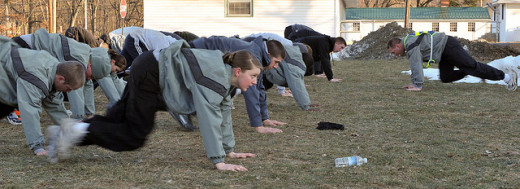
How to Calculate Target Heart Rate
A simple way to calculate your target heart rate, the ideal rate you want to reach during maximum effort cardiovascular exercise, is a two step process.
1. Calculate average max. heart rate. This is done by subtracting your age from 220. So if you are 41, 220-41=179 beats per minute.
2. Your 'target' is going to be 60-80% of your maximum heart rate, so if it is 179 bpm, you are aiming for between 107 and 143 bpm (or 179 x .6 and 179 x .8)
Of course there are times when you will want to push yourself to the maximum, but for longer cardio sessions, the THR is a good guideline for determining overall work output of the heart.
Tabata Interval Workout Examples
-The original. After a warm-up, set the stationary bike settings to allow for maximum output. High resistance is not the goal here, moving as fast as possible is. With a timer set to 20 seconds, start pedaling fast, striving to pedal ever faster until the timer sounds. Rest 10 seconds, again watching a clock or having someone time you, then immediately start another maximum effort for 20 seconds. Repeat this cycle 8 times.
-Alternatives. Do this same routine while sprinting, running stairs, swimming or doing a bodyweight exercise such as burpees or mountain climbers.
Steady State Cardio
Choose an unresisted activity such as walking, running, cycling, swimming, hiking, eliptical trainer and so on. Work up to your target heart rate (THR) and maintain this pace for a minimum of 20 minutes. Work up to a minimum of 30 minutes and then to infinity and beyond...
Combination Cardio Training
This approach is easiest with a continuous cardio activity like running, swimming or cycling. After a warm-up, increase the pace to your THR, depending on how long your cardio session is, increase the pace to maximum intensity for 20 seconds to 1 minute every 5-10 minutes. This will not only improve your VO2 maximum, but improve muscular power as well.
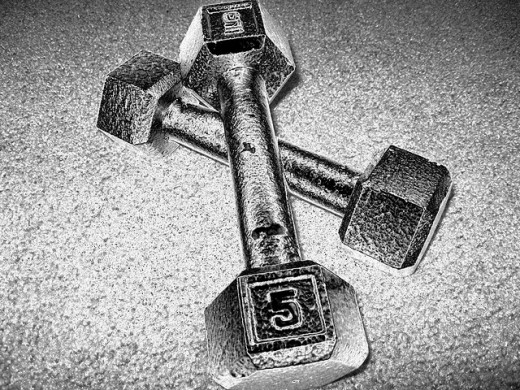
Muscular Strength and Endurance
“Strength does not come from physical capacity. It comes from an indomitable will.”
Mahatma Gandhi
Muscular Strength:
Maintaining or increasing muscle strength is vital to good health, especially as we grow older. Sarcopenia, the degeneration of muscle mass as we age, usually begins around age 30, and as young as 25. To combat this degeneration, regular resistance training is necessary.
Government health agencies suggest adults do some form of resistance training at least twice a week. However, requirements will be different for everyone. There are different considerations for a 30 year old male in good health who takes up resistance training and a 65 year old woman who does the same.
A good rule to remember with any type of exercise is to begin slowly and build up intensity gradually. In the beginning, less is truly more.
The definition of muscular strength is the amount of force a muscle can exert against a physical object. With this in mind, there are numerous ways to strength train. Here are some ideas:
Interesting Health Statistics
According to the President's Council on Fitness, Sports and Nutrition:
-Only 33% of American children are active on a daily basis
-Only 33% of adults gets the minimum (30 minutes) of recommended exercise everyday; only 5% get in 30 minutes or more every day.
-55-65% of adults 75 and older are not getting regular exercise.
-80% of adolescents and adults do not meet the guideline minimums for aerobic and muscle-strengthening activity
-Alaska, Montana, Utah and Vermont populations are 'most likely' to be physically active.
-Tennessee, Louisiana, Mississippi and Kentucky are considered the least active states.


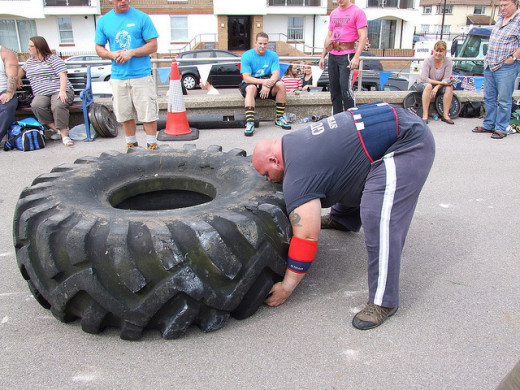
Bodyweight Strength Exercises
There are hundreds of effective bodyweight exercises. Master these basics first:
-Pushups
-Pullups
-Planks
-Bodyweight squats
-Leg lifts/V-ups/Crunch ups
-Lunges
After becoming proficient in these, more advanced exercises can be attempted. Some examples:
-Scorpion pushups
-One arm pushups
-Extended arm planks/Star planks
-One leg squats/Pistols
-Candlesticks w/Plow
Free Weights
Free weights are very effective at building muscle and strength. As with other forms of resistance, they can also be used to increase muscular power output and muscular endurance. A good routine will incorporate all four: muscle hypertrophy (building,) strength, power and endurance.
Machines
Machines are second to free weights in overall effectiveness as they tend to isolate body parts instead of using multiple muscle groups to stabilize the weight. However, they can be an excellent addition to a program in which the participant needs to strengthen specific body parts or is involved in rehabilitation.
Resistance Bands
Resistance bands are an excellent alternative to free weights when there is no access to the commercial or home gym. They are portable and fit in a small bag without setting off airport alarms.
Household or Odd Objects
Household objects such as books, backpacks filled with books, cans and milk or water jugs are excellent, if unwieldy resistance training tools. These ‘odd objects’ often add an extra element of difficulty due to the increased effort required to grip or balance them.
Functional training programs today typically include a number of odd object training implements which require multiple muscle groups to activate and create a greater metabolic response. These include sand bags, rocks or Atlas stones, large tractor tires, thick climbing ropes or heavy anchoring chains, to name a few.
- MosLadder: Heavy Stones - Interval Training Workout for Strength and Power
Combining interval training and odd object lifting for an intense cardio and strength workout.

Body Composition
BMI, or Body Mass Index, is the common barometer for determining the relative health of a person as it relates to weight. It is calculated by the following formula:
BMI= (weight/height2 ) This is a metric formula, so be sure to enter your weight in kilograms and your height in meters.
The following results give a general guideline for weight-related health:
18.5 or less=Underweight
18.5-24.9=Normal
25-29.9=Overweight
30+ = Obese
BMI is by no means a perfect indicator of fitness level, it is simply a general and simple guideline applicable to a majority of the population. There are problems with using this formula to calculate real fitness, however. For example, a 6 foot, 235 pound bodybuilder with 8-10% bodyfat would be considered obese with this calculation.
While BMI can be used as a general guideline, a good old-fashioned pair of calipers offers a more significant view of your body composition. Used on the back of the upper arm, calipers offer a fairly accurate body fat percentage rating. If your body fat percentage is going down and your fitness levels are going up (i.e., you are running/swimming/biking longer, lifting more) then your body is getting healthier and stronger.
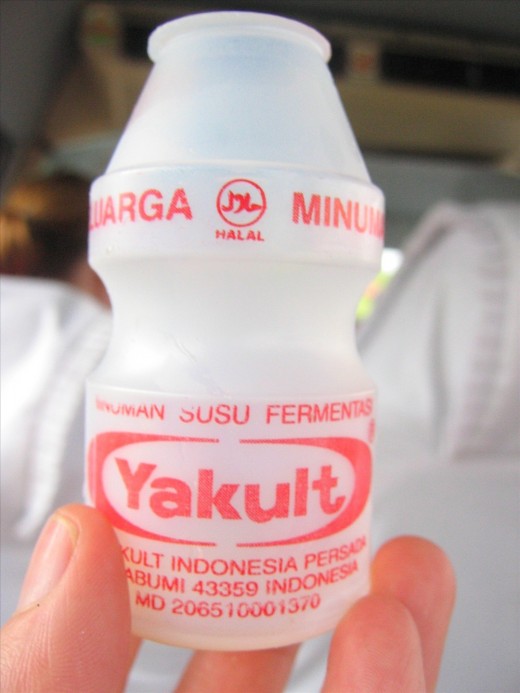
Nutrition and a Healthy Digestive System
Nutrition is the Key
Not surprisingly, ditching the processed and junk foods is the first step towards cultivating a healthy digestive tract. In fact, healthy eating, that is a diet filled with whole, natural foods, gives a person more energy, helps control blood sugar and lose weight, and can strengthen the immune system against inflammatory diseases and cancers.
To ensure you are getting the maximum amount of nutrients possible in your daily diet, eat color. Include greens (kale, spinach, watercress,etc.,) oranges (yams, oranges, carrots, turmeric,) reds (tomatoes, pomegranate, goji berries,) and dark colored fruits and vegetables (blueberries, cranberries, purple cabbage,) frequently.
These foods are so rich in vitamins, minerals, antioxidants, essential fatty acids and anti-inflammatory compounds that most of them are called 'superfoods.' By eating lots of fresh color in your meals, you help prevent heart disease, diabetes and cancer, but you also enhance athletic performance and enable the body to recover from stress much quicker.
In addition to eating lots of fruits and vegetables, use these tips for scheduling meals to keep the body's metabolic pump primed:
-Eat several (5-6) smaller meals throughout the day. Overeating can cause digestive problems and make you sleepy, leaving little energy for anything else.
-Drink plenty of water. Replace all other drinks (ok not your coffe or tea) with regular, clean H2O.
-Avoid saturated fat and chemicals found in processed foods. DO eat healthy fats like those found in avocadoes and almonds. These fats are essential for fighting inflammatory diseases and are an excellent fuel source. Fats found in avocadoes will actually improve your heart health.
-Consider drinking probiotics like those found in yogurt drinks. Probiotics research has attributed greater immune system health to those who drink products like Yakult regularly. They are also excellent sources of protein. Drink up.
Use these tips liberally! A smooth functioning digestive system keeps your energy levels up and your body clean and active.
Excellent Information about Healthy Foods

Mobility
Mobility can be defined as the ability to move or be moved freely. For the human body, this means being able to move through all three planes of motion, the transverse (rotational movements,) sagittal (up and down,) and frontal (out to sides while standing,)
It also means being able to move through six degrees of motion. As defined by physics, these are heave, yaw, surge, pitch, sway and roll; or:
-Heave: Jumping up and down
-Yaw: Turning left and right
-Surge: Walking forward and backward
-Pitch: Forward/backward somersault
-Sway: Sidestepping, bobbing side to side
-Roll: Cartwheel
Greater mobility is won by moving your body through increasingly greater ranges of motion. Mobility exercises do not have to be painful or executed to failure. In fact, simple joint rotations can contribute significantly to joint mobility when done on a daily basis.
- Bodyweight Training-Fast Functional Fitness That Burns Fat and Builds Lean Muscle
Bodyweight exercises can be humbling, but they are useful and functional exercises that everyone should have in their workout program. Use these tips and examples to get started today. - Indian Clubs and the Modern Clubbell
Indian clubs have been a serious fitness tool for ages. Learn a little about their history, and find out more about the modern equivalent called the Clubbell.
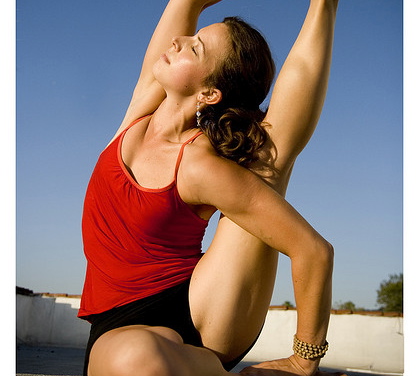
Flexibility
Flexibility refers to the degree of lengthening muscles can withstand. The term is also used in reference to a joint's range of motion. Both are important parts of an exercise program, and daily flexibility work is important for resilient muscles that resist injury and perform better.
Simply put, muscles able to stretch farther are less likely to be strained or tear when exposed to sudden eccentric and concentric contractions. Whether a person should stretch before or after a workout is a constant argument, but logically, warming up your muscles before pulling them apart seems like a good idea; unscientifically speaking, of course.

Mental Health is Physical Health
Mental fitness is not just important for a healthy lifestyle and for motivating yourself to workout and make good food choices. Training the brain for everyday life helps you focus on specific tasks, concentrate for longer periods of time and follow through when the going gets tough.
Pro and amateur competitive athletes incorporate mental training techniques during training sessions and before competitions. One technique used by sports psychologists is visualization.
Athletes put themselves in a calm state of mind, letting go of any pressing thoughts. They then begin a breathing sequence to center themselves, and through a guided meditation, visualize each step of the event.
If the athlete is a weightlifter for example, the coach may have them mentally walk through stepping up to the barbell, feeling the power of their grip on the bar, practicing 'knowing' they can lift the weight, and so on through the completion of the lift and release of the bar.
Mental preparation techniques are important for beating back self doubts, everyday distractions, fear and general nervousness. The more training one undergoes to clear these obstacles out of the way when it is time to perform, the better the results.
Mental training does not mean pumping yourself up with a fantasy. Quite the opposite. It begins with a brazen, honest self review of your current status. You must become self-aware to identify the mental barriers (which specific fears, doubts, etc.) that are inhibiting your full potential.
On the other hand, talking to yourself positively is a great way to get motivated and start pushing those mental obstacles aside. Like a competitive athlete, practice walking through each step of your workout or meal plan for the week.
If you are a competitive athlete, mentally visualize every possible situation, every obstacle. When fears creep up, find a solution to them. Find a backup for every eventuality. By training the mind this way every day, you are setting yourself up for success no matter what obstacle stands in your way.
Get Help Monitoring your Progress!
- Mobile Running Apps for Running with GPS - iMapMyRun | MapMyRun
MapMyRun is a mobile running application that uses your phones GPS to live track your running data including duration, run distance, speed, elevation and calories burned. - Mobile Calorie Counter, Mobile Calorie Tracker | MyFitnessPal.com
Free online calorie counter and diet plan. Lose weight by tracking your caloric intake quickly and easily. Find nutrition facts for over 2,000,000 foods. - JEFIT Free iPhone App | JEFIT - Best Android Workout App, Fitness App, Exercise App, Bodybuilding Ap
The JEFIT Free iPhone App is the free version of the JEFIT Workout, Fitness and Bodybuilding App for the iOS. Download this free app now to better and enhance your workouts! - FitnessBuilder
PumpOne is the world leader in mobile personal training solutions, creating portable fitness trainers that go where you go. With the world’s largest made-for-mobile exercise image and video library and state-of-the-art technology with the simplicity - Vitogo - A personal trainer at your fingertips
A fitness app for the iPhone and iPod Touch that coaches your through a tailored workout program that grows with you, just like a personal trainer.


